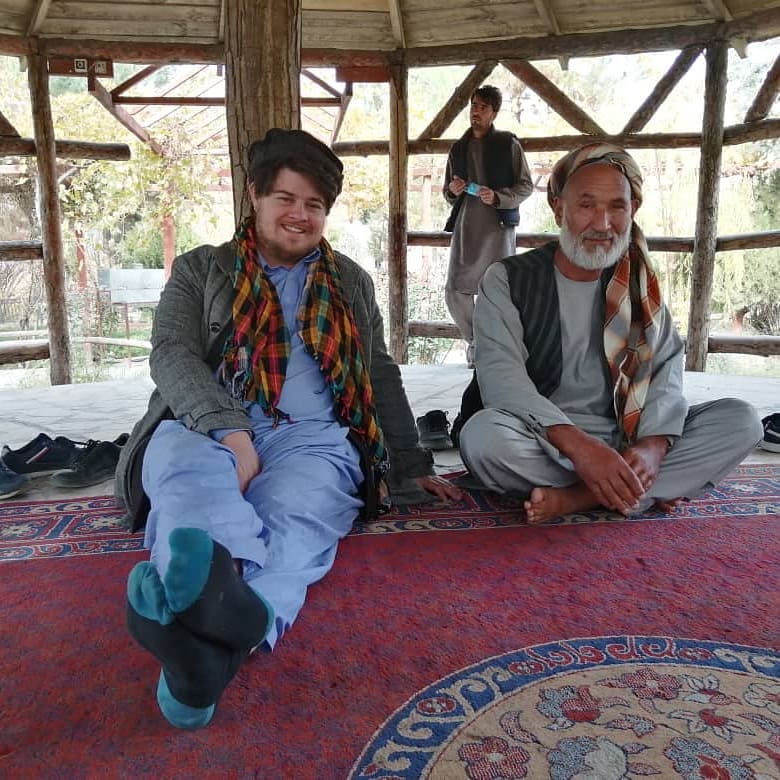Straddling the Iran – Turkmenistan border is the picturesque yet imposing Kopetdag mountain range. They form not only a natural geographic border between Turkmenistan and Iran, the Middle East and Central Asia, but also a social, political and cultural border. One of the most fascinating and rarely discussed crossings in the region. If you’re an adventurous traveller eyeing a passage between Central Asia and the Middle East, the border between Turkmenistan and Iran offers more than just a line on a map, this border is a gateway shaped by centuries of history, rugged mountain landscapes, and the legacy of empires long gone.
A Border Steeped in History
The Turkmenistan - Iran border isn't just any boundary, it's a relic of 19th-century imperial chess. In the mid-19 th Century, the Russian Empire was expanding southwards, carving up Central Asia piece by piece. In 1869, after negotiations with the Persia authorities, the Atrek River was declared the official border. This demarcation stood the test of time, surviving the birth and fall of the Soviet Union. It’s fascinating to stand today where once the USSR ended and Iran began—a meeting point between two vastly different worlds.
The route less travelled - Why is this border so interesting?
What truly sets this border apart from others regionally is the journey that awaits you beyond the checkpoint. Crossing into Turkmenistan, but instead of immediately reaching customs control, you journey officials through a winding, mountainous stretch for many kilometres. These Kopetdag mountains serve as a natural cushion where you’re technically inside Turkmenistan, yet still under heavy border watch, far from the official crossing station. It’s a unique experience—a slow descent into a new country that builds anticipation and a surprising sense of isolation.
Official border crossing points - Where can you cross?
There are four main crossing points you should know, each with its quirks, local color, and challenges:
- Sarakhs (Iran) – Serakhs (Turkmenistan): The busiest and most developed crossing, operating from 8 am to 3 pm, with shuttle services bridging the tricky gap between immigration posts.).
- Bajgiran (Iran) – Gaudan (Turkmenistan): Known for its slow but meticulous border procedure, sometimes with 1-3 hour waits. Open 7:30 to 15:30 Iranian time.
- Lotfabad (Iran) – Artyk (Turkmenistan): Travelers are advised to avoid weekends, as it gets half-closed. This crossing can be confusing with ‘helpers’ that might charge extra.
- Gudri-Olum (Iran) – Incheboron (Turkmenistan): A lesser-known yet picturesque route for those heading to the ancient Gonbad-e Qabus mausoleum.
Crossing Formalities: What do you need to prepare?
Prepare your paperwork well in advance:
- Visas: Both Iran and Turkmenistan require visas. Turkmen visas are issued on arrival with the presentation of a valid Letter of Invitation. Iranian visas need to be obtained in advance for most passport. In order to get an Iranian visa, you will now need to book a guided tour, receive a visa authorisation code and then get your visa from a diplomatic mission. Visa on arrival in Iran is only valid at certain international airports.
- COVID-19: PCR tests are still required when entering Turkmenistan. Iran no longer requires any testing.
- Fees: When entering Turkmenistan from Iran you will be required to pay a Visa Fee, Migration Tax, Bank fee, as well as the PCR test fee. Make sure your cash is in new, unmarked USD.
The Experience: What to expect from this unique border crossing
Crossing this border is a multisensory experience—a blend of history, geography, and human stories. The long mountain drive under watchful eyes, the haggling for currency exchange, the waiting in line with other travellers and locals, the checkpoint workers moving you through a bureaucracy tangled with every bit of Soviet-era holdover.
Expect to engage with Russians or Turkmen speakers, experience border security drills where protocols might stretch your patience, but also catch rare glimpses of nomadic life that still threads through this borderland.
If you’re lucky, the vast, rugged Kopet Dag mountains will unfold dramatically outside the vehicle windows, reminding you that borders are not just political lines but places of intersection, transition, and shared history.
We love crossing interesting land borders! Most of the world has gotten much easier to travel, so if you are looking to enjoy this unique experience, then check out our Turkmenistan and Iran tours
here on our webpage.
If you'd like to know more about either country check out these links for our comprehensive destination guides on each country
here (Iran)
and
here (Turkmenistan)
.
To join us on one of our trips and one of our many cross-border adventures, send us an email to [email protected].



